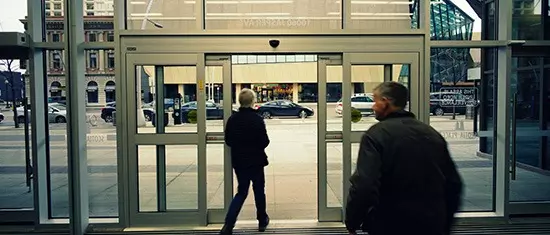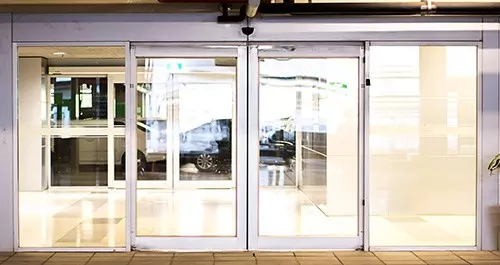Automatic doors are, in their own rights, considered heavy machinery and should be respected so. The force required to operate these doors can easily cause grievous harm to a person if an accident is to occur. This is why there are a number of health and safety regulations to protect the users of the doors.
New European Standard for Automatic Doors
These standards emphasise the current guidelines with the aim of minimising dangers that can be caused by installers and specifiers to users of doors. European standard EN 16005 was established in April 2013.

The standard is meant to protect pedestrians against accidents due to automatic door design and installation. The introduction part of the standards is described, " handling all the vital hazards, hazardous situations and events related to doorsets operated by power if their use is per intention and the misuse conditions can be foreseeable reasonably by the manufacturer."
The objective of the standards is to boost cross-border trading and was the first formalised pan-European standard for the operations of automatic doors. All the countries of EU must adhere to the standard since any products manufactured outside EU for use while inside it. The standard is also popular in other countries outside EU, for instance, the Middle East and Asia. The formation of EN 16005 can be associated with the current standards, inclusive of the BS 7036 parts 1-5 that has been known to be the code of practice from 1966, and German standard 18650. It has 19 references that are normative.

Ensuring the Safety of Door Users
You need to consider the safety of door users since the door operated by power are machines with moving parts. The hazard that is obvious with these doors is when the moving parts can move past beyond the fixed parts, thus increasing the chance of your finger being trapped or result to crush of bodies. The danger points vary depending on the type of door:
Automatic Sliding Doors
The points where two leaves meet and closing edges are considered danger points. It is possible for the hazards to be reduced with pocket screens and sensors. You should be aware that a lot placed at the door top is not a hazard due to its position above the level of the floor. It is for this reason that any injury from the touch of the door here is categorised as an intentional act.
Automatic Swing Doors
The points of danger here are where the door comes into contact with the frame and secondary closing edge where the door is pivoted. You should control the speed of closing and opening of the door, and use of safety sensors to curb the primary danger points. The danger of the secondary closing edge will be avoided by the protection of finger entrapment.
Automatic Folding Door
Where the leaves interact is the main points of danger-the main closing edge- and where door folds-the secondary closing edge. The limitation of closing and opening speeds and use of sensors will help to curb any possible injury. The finger entrapment will be avoided by the profile design on a secondary closing edge.
Revolving Doors
The additional closing edges make the revolving door have several danger points. The moving leaves will, therefore, require heel or foot switches so that the door can stop on catching up with a user. The moving leaf's top ought to have a safety sensor. The leading mullion should a strip for safety.
Clear Signage
All automatic doors should have clear signage to boost system safety. A commissioning engineer is responsible for attaching all the essential signage at the start, and the building owner or occupier should ensure it is maintained. Signage should be fitted to a door system powered within a height range of 1300 mm and 1600 mm. Appropriate signage includes:
- Automatic door sign
- No entry sign
- Emergency break-out sign
- Keep clear sign
- Direction of travel sign
- Disabled person sign

